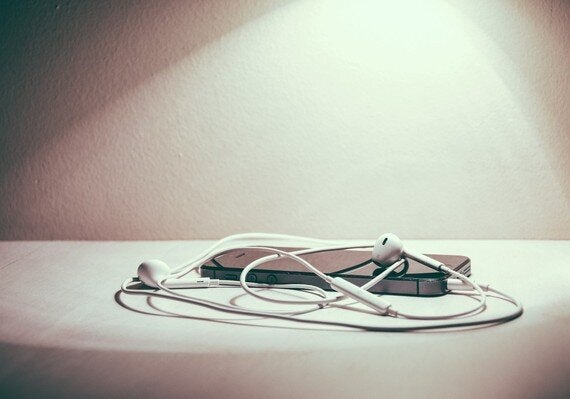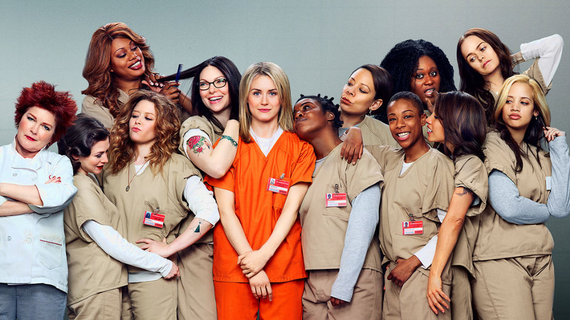
From making information near-universally accessible to instantly connecting people across the planet, the post-digital world has brought about a modern global renaissance. A groundswell of innovation is forcing a seismic shift across all industries. The public is re-imagining the American education system through a US$50M privately funded crowdsourcing platform. Individuals are managing their health thanks to the combined effects of mobile and the Internet of Things, the latter expected to add US$10 to US$15 trillion to global GDP over the next 20 years.
Community is driving an entirely new (sharing) economy projected to generate US$325 billion in revenues by 2025. And yet, digital music platforms continue to struggle to connect with a more informed and empowered world.
While digital music sales grew by 6.9% in 2014, accounting for nearly half of the industry's revenue, global record sales have dropped by nearly 75% from $60 billion in 1996 to $15 billion in 2014.
When Apple Music, Spotify and Tidal launched, they were hailed as digital prophets that promised new ways to monetize the experience. Thus far, their solutions have fallen short of fireworks. Just slightly over a quarter of Spotify's 75 million active users actually pay for the service. And, as The Guardian UK reports, despite pulling in €1.08 bn in revenue, its losses were €162.3m.
Tidal launched to much fanfare, but shortly thereafter fell off of the iTunes top 700 apps chart. And then of course there is Apple, who after buying Beats by D.R.E and bringing on one of the industry's biggest names was expected (read: is always expected) to revolutionize the experience.
But despite over 90 million active iPhones in the US right now, Apple Music has only attracted a tiny sliver of its potential audience with 10 million paid subscribers. While there has been a 39% revenue growth in global subscription services, only 15% of consumers in the music industry's biggest market, the US, pay for streaming services. What gives?

Source: Creative Commons
It's not that today's generation isn't listening to music; Americans over the age of 13 spend 25 hours a week playing their favorite tunes. Nor is it that they don't have the cash to pay for it -- the average Millennial spends US$163 annually on music, the most of any generation.
But with only 9% of their spending going towards paid online streaming services and a majority of consumers (78%) saying they are "somewhat unlikely or very unlikely to pay for streaming in the next 6 months", digital music platforms have failed to capture their hearts and open their wallets.
So what's broken?
Digital interconnectivity has removed barriers, given a voice to the voiceless, and expanded the number of ideas and opinions we're exposed to.Instead of harnessing digital's potential to amplify experiences, heighten emotions and reinforce our collective impact, leading streaming platforms have fallen back on using it as another distribution channel.
The world doesn't need another distribution channel. A channel implies a singular, monolithic and unidirectional path. Engagement today is pervasive. Pervasive content integrates itself into the conversation instead of invading it. When digital music platforms are treated as a distribution channel, people are defined as consumers and innovation is designed to increase transactions. Incidentally, when we begin to see and understand 'consumers' as people, it is then that we can begin to increase profits.
With a direct purchasing power of $200 billion per year, today's generation is more than willing to spend money, but their decisions are motivated by something different. Their buys are an extension of their values and beliefs.
The digital revolution has made it impossible for Millennials to be ambivalent about world issues. Some 60% use social media to stay up-to-date on current events, with 77% saying it's important to stay aware of the news. The endless flood of information available online has led 84% of Millennials to consider improving the world their duty. As a result, their purchasing power has become their voting power. They're choosing to support businesses that are connected to and are acting as a force for good in the world.

Source: Netflix
Purpose can drive profit. Look at Netflix. The streaming media giant has done away with the traditional approach to content delivery and put understanding Millennial attitudes, behaviors and values at the core of its business model. When seven in 10 young adults consider themselves social activists, Netflix realized that conventional storylines and casts just wouldn't cut it.
Between Master of None, Orange is the New Black and Making a Murderer, Netflix has positioned itself as more just than a streaming service, but a rallying cry for more representative entertainment. In so doing, the platform has amassed a loyal community of over 75 million paying subscribers and ended 2015 with US$6.78 billion in revenue.
Meanwhile, only a quarter of Spotify's 75 million users are paid subscribers. Why? With Spotify, the only advantage of paying for your subscription is to rid your experience of intrusive advertising. And let's be frank, incentivizing people to pay for something they never really wanted in the first place is archaic and reduces the experience to a transaction. Where digital music platforms use data to invade our experience, Netflix uses their market metrics to create content that pervades the cultural conversation. The challenge is applying this to digital music platforms and making them matter.
We need to prioritize music's original intent: emotion, connection, action. Even more than the spoken word, music has the unique power to make us feel. How can digital heighten our emotional experience? When experienced live, music creates a sense of intimacy amongst a crowd of thousands. How can we cultivate deeper connections among audiences, and between audiences and artists alike? Music has always been an agent for social change. The next step is digital catalyzing music's power to activate and amplify positive social change.
This blog originally appeared on Medium.
Follow HuffPost Canada Blogs on Facebook